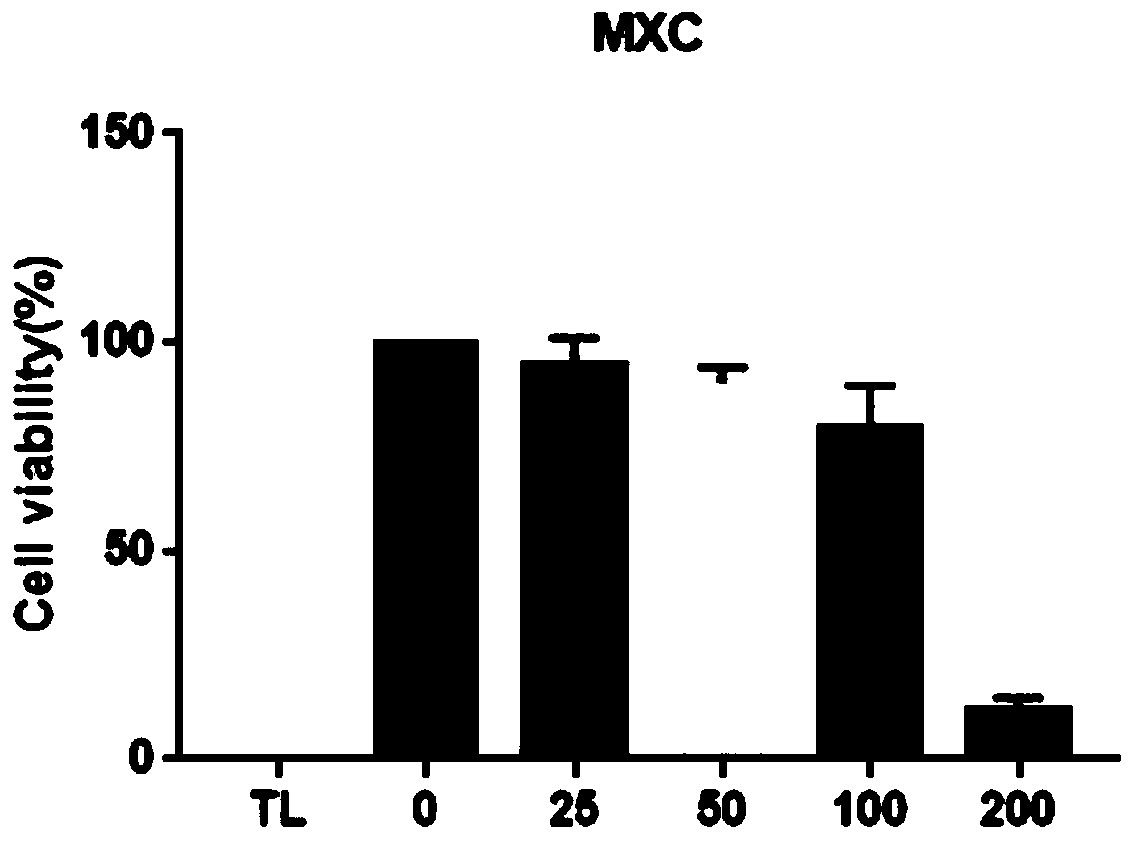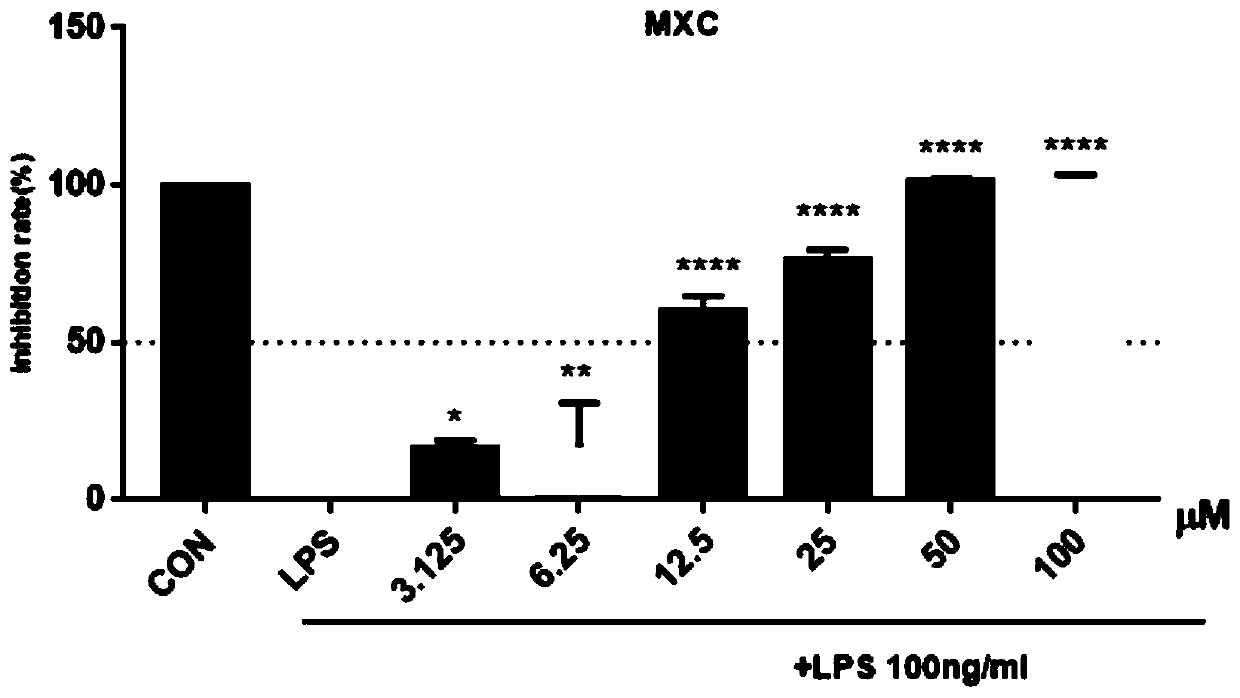Application of luteolin
A technology of luteolin and medicine, applied in the field of medicine, can solve problems such as neuroinflammation not seen in luteolin, and achieve the effect of inhibiting the activity of neuroinflammation
- Summary
- Abstract
- Description
- Claims
- Application Information
AI Technical Summary
Problems solved by technology
Method used
Image
Examples
Embodiment 1
[0027] In this example, the MTT method was used to investigate the effect of different concentrations of luteolin on the viability of mouse microglia.
[0028] (1) Cultivation of mouse microglia cell line BV-2
[0029] The cell culture medium is based on DMEM and is configured with 10% FBS and 1% double antibodies (penicillin and streptomycin). Mouse microglia cell line BV-2 cultured in 5% CO 2 , In a cell incubator at 37°C, observe the growth of the cells regularly under a microscope. When the cell adhesion area is about 70%-80% of the culture flask, trypsinize the cells and pass them down, and then continue the culture.
[0030] (2) Cell viability determination
[0031] Experimental principle: The succinate dehydrogenase in the mitochondria of living cells can reduce exogenous MTT to water-insoluble blue-purple crystal formazan (Formazan) and deposit it in the cells, while dead cells have no such function. Dimethyl sulfoxide (DMSO) can dissolve formazan in cells, and its light abso...
Embodiment 2
[0035] In this example, the Criess colorimetric method was used to investigate the inhibitory effect of luteolin on the release of NO from microglia induced by LPS;
[0036] Cell line: mouse microglia cell line BV-2;
[0037] Medicine: luteolin, LPS, NO kit
[0038] Determination of nitrite content:
[0039] Experimental principle: When LPS stimulates the body to produce neuroinflammation, BV2 cells are activated in a large amount, the expression of NOS increases rapidly, and a large amount of NO is generated; NO can induce ROS reaction to form peroxynitrite anion (ONOO-), producing neurotoxic substances OH·, OH-, cause protein degeneration and neuron damage. NO is easily oxidized to produce NO in organisms and aqueous solutions 2- And NO 3- , And NO 3- Can be reduced to NO by cadmium 2- ; NO 2- In an alkaline environment, it can react with sulfonamides to generate diazonium compounds, and then couple with N-1-naphthylethylenediamine salt. The resulting azo compounds are purple-red, ...
PUM
 Login to View More
Login to View More Abstract
Description
Claims
Application Information
 Login to View More
Login to View More - R&D
- Intellectual Property
- Life Sciences
- Materials
- Tech Scout
- Unparalleled Data Quality
- Higher Quality Content
- 60% Fewer Hallucinations
Browse by: Latest US Patents, China's latest patents, Technical Efficacy Thesaurus, Application Domain, Technology Topic, Popular Technical Reports.
© 2025 PatSnap. All rights reserved.Legal|Privacy policy|Modern Slavery Act Transparency Statement|Sitemap|About US| Contact US: help@patsnap.com


